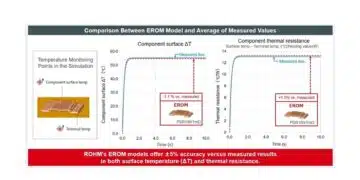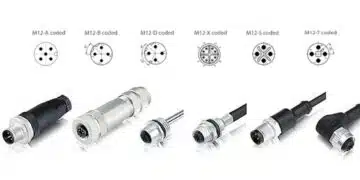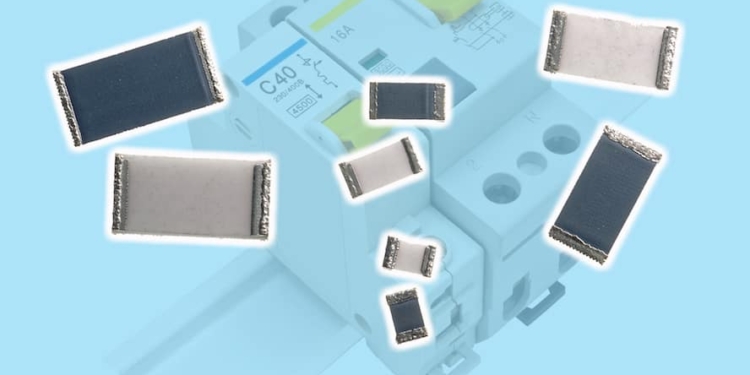source: TT Electronics news
Woking, UK, 11 January 2018 – TT Electronics, a global provider of engineered electronics for performance critical applications, today announced the HPWC (high pulse withstanding chip) range of high energy surge resistor products. The high pulse resistors are designed to maximise the level of surge performance available in a single-sided flat chip design. The HPWC range is ideal for protection and discharge applications in compact power supplies and power control circuits where a resistance tolerance of five percent is required.
Available in four sizes from 0805 to 2512, HPWC resistors withstand up to 6.5kV peak for a 1.2/50μs surge and up to 3kW for a 0.1ms pulse. The product is essentially an evolution of TT Electronics’ PWC (pulse withstanding chip) resistors but where the resistance value is adjusted by precise process control rather than by laser trimming. This process maximises and improves the level of surge performance available in a single-sided flat chip design. Resistance values available are from 1R0 to 100K, and there are four sizes from 0805 to 2512, with ratings from 0.25 to 2W.
Providing enhanced ability to absorb high energy surges, these high energy chip resistors are ideal for power supplies, circuit breakers, motor drives and medical monitor input protection. As such, the thick-film resistors are aimed at designers of compact SMD circuits in power conversion, motion control and protection applications in the industrial and medical markets.
Factors driving the demand for this type of product are the growth in distributed power management and motion control in industrial and automated systems, and pressure to reduce size and weight whilst increasing surge protection for EMC regulatory compliance and product reliability.
TT Electronics’ HPWC resistors’ compact PCB footprint minimises use of valuable PCB area, whilst the absence of laser trimming means no current crowding and a consequential avoidance of hot spots, improving product reliability. Significantly, the HPWC series offers a higher surge performance than key competing parts from other companies.
As a single-minded proposition from a buyer/specifiers perspective, TT Electronics’ HPWC resistors provide leading levels of surge protection within a given PCB footprint while saving space and enhancing reliability.
































